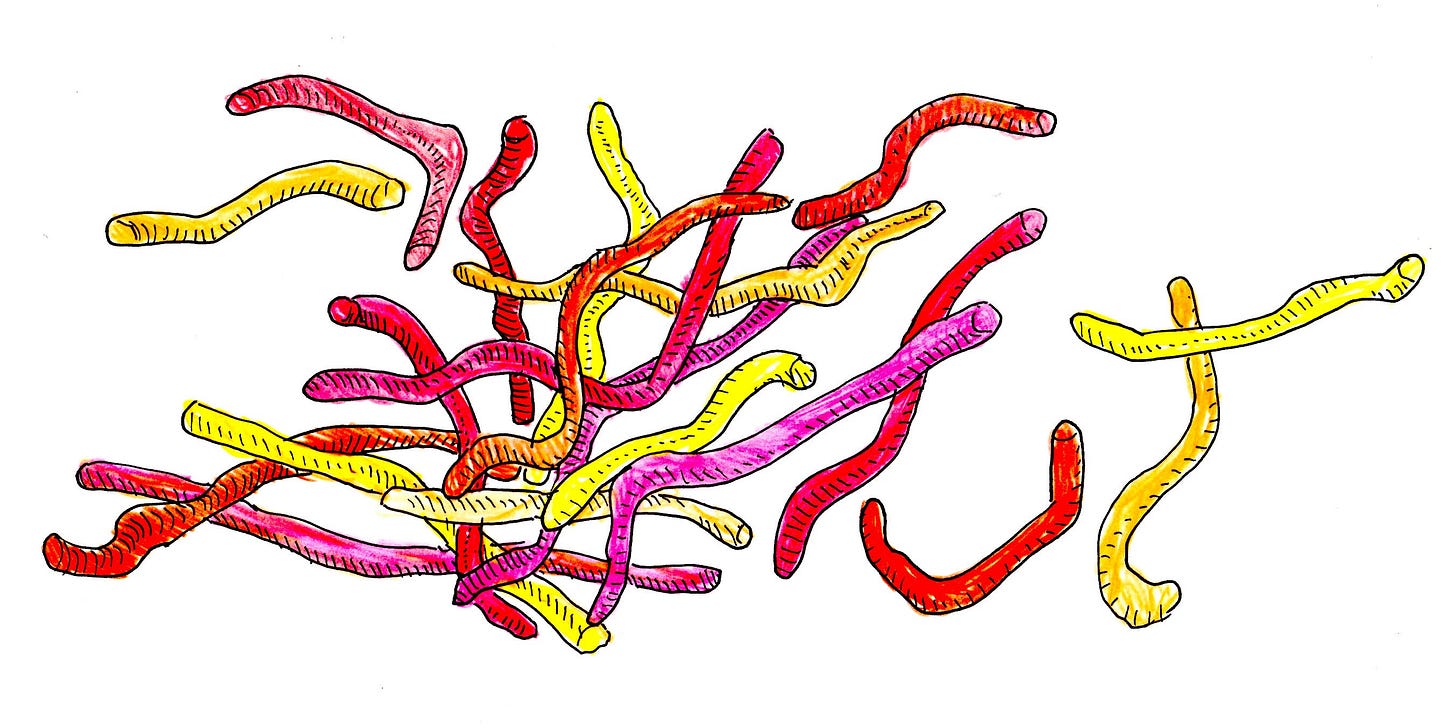Why does my compost get hot?
One reader's BURNING question receives a FIERY response in this week's edition of The Rot.
“I don't know if this is too elementary of a question for the newsletter, and obviously I could Google it, but: Why is compost hot? The Rot is my new favorite publication.”
— Edith
I chose this question for ….objective reasons, but also because it gives me the chance to talk a little about one of my favorite subjects: bacteria.
Bacteria!
I love ‘em. Bacteria do some seriously essential work for us, and it’s a shame that the advertising industry has spent the last seven or so decades convincing us they’re all evil. They’re absolutely not! Bacteria are critical to the nutrient cycle, the formation of healthy soils, the growth of plant life, and are foundational to our ability to be, well, alive. Aerobic bacteria are one of the main reasons your compost pile gets hot. It’s actually pretty simple. As these oxygen-loving microorganisms break down the organic matter in your pile, they turn it into fuel for their own cellular processes, which creates heat energy.
Like this:
Or like this:
In general, there are two main temperature ranges in composting: mesophilic and thermophilic. A mesophilic pile is between 50°F and 113°F. A thermophilic pile is anything above 113°F. The temperature of your pile is a big part in determining its particular population of microorganisms. A mesophilic pile is full of mesophiles, and a thermophilic pile is full of thermophiles. Go figure. Many backyard piles are permanently mesophilic. That’s okay. Mesophiles can do the work of decomposition just fine, even if a little bit slower. However, most compost piles will vacillate between being mesophilic and thermophilic. Activity from mesophilic organisms will begin to steadily heat the pile, until the temperature gets too hot for them, at which point thermophiles take over. Thermophilic microorganisms love heat and can survive very high temperatures. They go to town until they run out of the type of high-energy material found in organic matter, at which time the temperature begins to decrease, and mesophilic organisms resume dominance. Thermophilic activity is most likely to occur right after you’ve added fresh materials.
Can a compost pile get too hot? Yes.

This pile, which I manage at a nearby community garden, reached temperatures of 170°F last week. In this range, it’s likely that beneficial microorganisms will start to die off. I’m hoping I solved this problem by quickly turning the heap and watering it throughout. (We’ll see.)
Why would somebody want hot compost?
Well, somewhat ironically, it’s really cool (like, neat) when your compost starts to steam. Having “hot compost” is definitely a badge of honor for any gardener. Thermophilic decomposition is also faster than mesophilic and has the added benefit of killing off pathogens, weed seeds, and any other unmentionables that might have made it into your pile. If you’re stuck wondering why your heap isn’t getting hot enough, double-check what size you’re keeping it at. For a pile to become thermophilic, it generally needs to be big enough to self-insulate (trap the heat that the aerobic bacteria are generating). Most of the books I’ve read say that 3x3x3’ is the minimum size to create a thermophilic pile.

There are some other cool, weird, and probably unseemly benefits to having hot compost. People have used hot piles to heat their homes, their showers, and even for luxury cuisine. Not bad!
Now, before I go, it’s time to add the usual caveat that I’m not a scientist, but a self-taught soilhead and compost-lover, who has simply read a lot of books, and listened to experts that are smarter than me. One of my favorites is Mark Sturges, who is an organic farmer and compost master, located firmly offline, but also in the Pacific Northwest. You can listen to a rare appearance of his on Sustainable World Radio.
Love,
Cass



I try to keep my pile in the mesophilic range. It does heat up a lot if I've added things like grass clippings, (in layers and spread around, but still they are like jet fuel), and what I notice is that a hot pile gets dried out quickly and the worms leave the scene. So then I'll mix, aerate, and water to get back to a medium heat that seems to make the nicest product.
I learned a lot here :)
The photo of your 'too hot' pile was interesting too, because there were larger sticks (or maybe stalks - I wasn't sure which) in the pile. My two compost piles don't often get very hot and I *thought* that maybe it's because I didn't mulch everything into smaller pieces before adding it.
My wife is a flower gardener and so she ends up with a ton of flower stems and dahlia tubers that go into the compost piles.
Anyway, your picture just made me realize I must be off balance with other elements of my piles (to have them remain on the cooler end), glad to know I don't have to break down *everything* that goes in and I can still reach a healthy mesophilic temp.